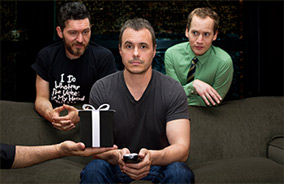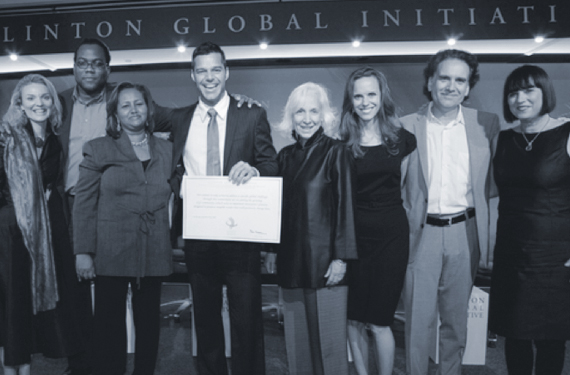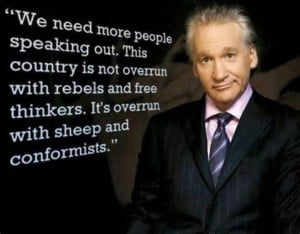After my last post about the Patheos theme of “Defining Moments” Mike Helbert left the comment, “It’s been awhile!” (Thanks for your note Mike!)
It’s been awhile because I’ve been speechlessly saddened over the past several weeks as I listened to news story after story about young women committing suicide after being raped, often not fully understanding what happened until the rapists sent pictures of the attacks viral. These 13- through 16-year-old girls were criminally violated, socially humiliated, psychologically destroyed and also sadly certain of one thing: their character and stories would be on trial much more prominently and with much greater suspicion than the rapists. In line with the same long history of rape in our country and world (back beyond biblical stories), they are too frightened to speak up for themselves because their experiences are immediately trivialized, they are questioned harshly, and their voices are suppressed by bullies, media, the rumor mill, attempts at intimidation and cover-ups by authorities from schools, sports teams, parents, police and prosecutors, and political offices. The only new part of this trend is the cell phone/social media factor and the added vulnerability and pain.

Three 16-year-old boys raped Audrie Pott in California and yet she was the one whose reputation was ruined in the community, prompting her to feel so hopeless about ever recovering from it that she killed herself. But the boys had clearly not been socialized to think raping a passed out 15-year-old would ruin their reputation. In fact, they were so impressed with themselves and their group conquest that they shared pictures of it.
One picture of her face on social media has been pasted across with the words “target neutralized.”
Two unnamed 13-year-old girls recently raped by three 17- and 18-year-old boys in Connecticut were widely called “whores” on social media. Rehtaeh Parsons hanged herself in her bathroom after four of her classmates gang raped her and she endured the ensuing, relentless cyberbullying. Victims are generally exposed, taunted and even threatened with their lives, while the rapists are often protected by interested parties who don’t want the boys’ “lives to be ruined.” Despite the pictures and texts, authorities lag in making arrests; a fellow student of Potts was disturbed as he noted to the press that it took “maybe half a year” for the rapists to be arrested, sparking a firestorm of threats, speculation and heckling that led to Potts’ suicide.
Recently a friend at dinner brought up the fact that the sexual molestation of a small child is the most heinous crime possible, since the child doesn’t understand what’s happening and can’t fend for her or himself, doesn’t have a voice. So true, I thought, it is the worst. Steubenville and the other suicides came to mind and I also began to consider the victims who were suspended somewhere between innocent childhood and the maelstrom of adult cruelty and intent and it occurred to me: …yes, and it is also ironic and infuriating that then as those children grow into adults who supposedly have a capable voice to use when attacked, or are even considered at an age of ‘consent’, our biased society still villainizes, threatens and suppresses the voices of the victims, forcefully and purposefully rendering them back into that position of a helpless child, intimidating and humiliating the vulnerable into silence. This is the insidious trick, the common denominator of the rape culture.
I can rattle off a ranges of examples from Penn State to people I personally know. It is additionally important for us as we try to find ways to protect our small children to consider it within the full big picture of human heinousness and the reality of sexual violence, to go further to admit and recognize that our general, entrenched rape culture does no justice for anyone of any age or gender. That not looking at the complete beast and linking all of it actually perpetuates it, gives it unseen, unattended cracks in which to grow and proliferate. We have to ask what it means that the terror and silence does not stop after our muted, confused childhoods, what we at large are being taught. There is often a cycle deep in this rape culture that takes perpetrators, and sometimes even torments and poisons prior victims, right back to the very worst crime of targeting helpless children. It is all interconnected.

Steubenville and the other suicides highlighted that the bullying suspicions about pre-teen and teenaged girls who get raped are suspicions attributed to an adult ability to be “too sexy for their own good”, to be passed out, to supposedly “knowingly” be in the wrong place at the wrong time, whether adults are present or not. Left with no hope for solid support, with the sure knowledge they will be violently exposed and assaulted again now by the cloud mind and community, and with the fact of how harrowing it is to prove their case under hostile circumstances, victims do not come forward and report. They suffer alone and get the message from our culture that their experiences do not matter, they are not worth fighting for, they are sub-human. Some would rather die by their own hand.
I get the trauma, as someone who was also was once a young girl-not-woman-not child feeling this way, wondering if ending myself was the only way in my community to to speak it out loud, the only way not be blamed, the only true act left available to finally move from child to adult in a way no one would seem to let me in that situation. This does not negate or attempt to compare the innate voicelessness of a small child to the repression of older voices, it serves to help bolster the knowledge of the fight we must take up at large in our society against rape culture as unified children, adults, victims and advocates who work together to put the larger picture in place, detect the patterns, recognize the signs in the silences, and systematically fight it together. It is my responsibility to speak up now and risk telling my stories to advocates and hecklers alike, even twenty years later, so that I can do my part in putting those pieces of the picture into place. For the small children, for the teenagers, for women and men, for the greater good, for the ultimate goal of the healing and wholeness of our society. We are all in this together, both complicit even in the smallest ways in its perpetuation, and yet tremendously integral to putting an end to it all.
You already know along with me that when victims are silenced in these myriad ways, the large majority of rapists then get away with it, and then more rapists are born of the sheer assumption that our society in total generally facilitates this getting away with it. Rapists are fueled by this implicit evidence that we aren’t unified in our interest in listening to, believing and taking seriously the victims, we are not unified in enough concern to really try to address it from the roots and fight it, to do the hard work of humbling ourselves, looking for the holes, and revamping our system from the ground up. Steubenville and these other cases are just a few examples of how this repeatedly goes down, and even those would not have come into the light had the perpetrators not proudly circulated photos.
Society still asks why a girl was drinking at a party (where the boys were drinking too, of course) instead of asking why boys rape girls who are incapacitated, where they get the idea. Society asks why the girls were out, what they were wearing, not “how are our cultural systems failing in such a way that boys think they have the express right to the bodies of females?” Our institutions, authorities, politicians, educators and bastions of popular culture are not asking the right questions, like “how and why are we teaching boys that men have a unquestioned right to sexual gratification” or “how do we raise and socialize boys not to rape?”
We do it by changing the definition of what it means and looks like and requires to be a man in our society, was the consensus of an all-male panel of high-profile men leading this conversation when they were assembled last month by Vagina Monologues author Eve Ensler at the Paley Center. The panel, called “After Steubenville: Breaking the Male Code, A Call to Action”, included politics and sports writer Dave Zirin of The Nation, founder of the Man Up Campaign Jimmie Briggs, and former All-American athlete, coach and pastor Joe Ehrmann. They agreed that all men, especially those in positions of notoriety and authority, must stand up, speak out and exemplify a new kind of real masculinity, by changing the paradigm of pervasive male socialization.

In next week’s part 2 of this post, I’ll give more details about the unbelievably moving, enlightening and sometimes shocking discussions and conclusions among the all-male “Breaking the Male Code” panel.
But before I share that, and finally for today, where does our collective cooperation with God come in this discussion among men about solutions?
Peter Buffett, Warren Buffett’s son who runs the Novo Foundation empowering adolescent girls with his wife Jennifer, summed it up perfectly when someone asked why he felt it important to be on a panel about men and sexual violence. He said that the Divine is not above us or living inside our separated personal silos. The Divine exists among us and between us, at a cellular level connecting our very cells inside each of us, among and between us as human beings, among and between we humans and the universe in which we live.
God is found in the unity we work to create within our own selves and between us and others. God is in relationship; if we lose true and equal relationship between human beings to the power-over, dysfunctional transactional machine of current societal assumptions and functions, we lose the Divine.
So I remember in every conversation and interaction I have that to call on the Divine whose power is generated between and among us in relationship is also key to creating a unified voice that can speak up for the voiceless victims. This is an important piece of solving the problem. This takes a willingness to look closely, to see what is not always obvious, to take action, to humble ourselves to open discussion and discovery, to risk sharing our experiences, to listen with empathy and a willingness to hear what is between our pauses and inability to form the right words. The obstinateness, closedness or selfish fear of just a few breaks crucial personal and communal links, and continues to incubate the silence, ignorance, and misdirected anger that prevents the forward progress that gives voice to the voiceless.
It takes all of our education, awareness, action but most importantly a unified human understanding of the big picture between as many members of humanity as we can muster and include and enlist. For it is in our personal honesty at our own cellular level, in the relationships between us, in the recognition of the Divine who can only complete a vision of wholeness when realized among and between our very cells, that a solution lives.
In the meantime, I highly recommend this brilliant TEDx video break-down of the rape culture in 18 minutes by Jackson Katz, PhD, called Violence & Silence. Please share what it means and says to you.
************************************************************************











